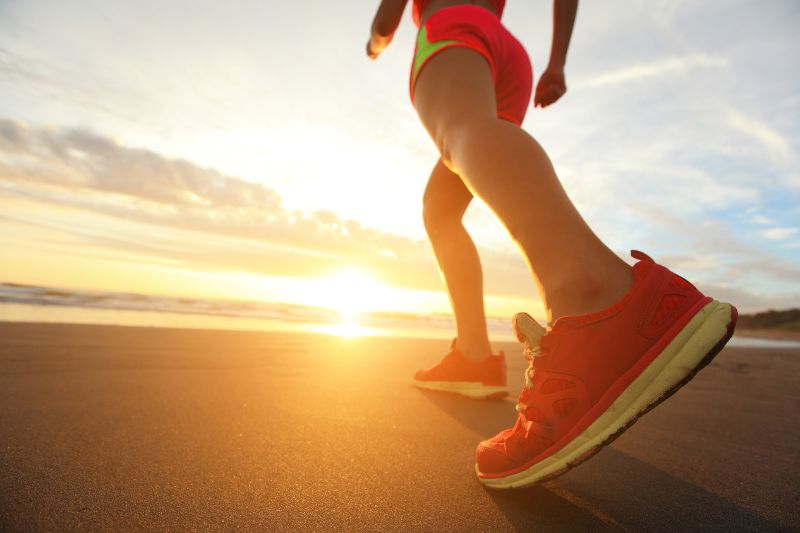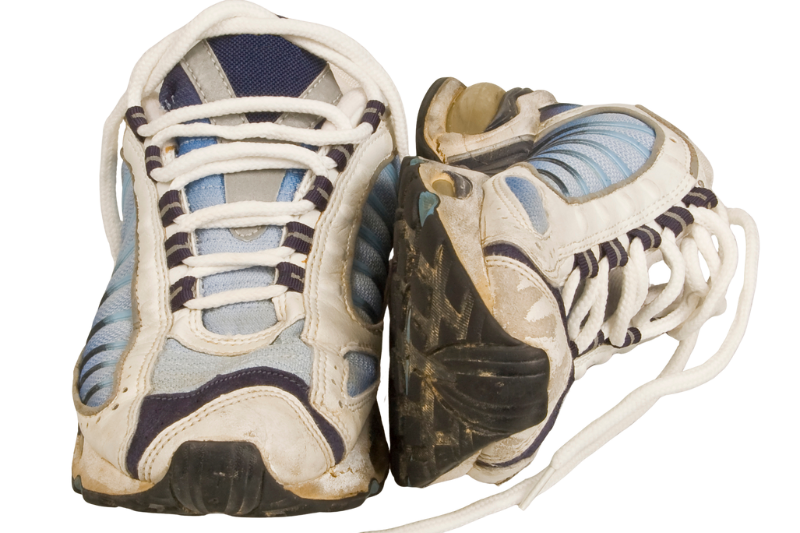Running in the Heat? 5 Ways to Protect Your Knees, Feet, and Ankles This July

As July rolls in with soaring temperatures and longer days, many runners take advantage of the sunshine to keep up their training or hit new personal records. But with the summer heat comes a unique set of challenges—especially for your knees, feet, and ankles. The combination of high-impact activity, overheated surfaces, and dehydration can make even the most seasoned runners more vulnerable to injury.
Running is already demanding on the joints and soft tissues. Add Georgia’s summer heat into the mix, and your body works overtime to cool itself, sometimes at the expense of muscle performance and joint stability. Over time, this can lead to swelling, inflammation, and overuse injuries—especially in the lower extremities where the impact of every stride is absorbed.
Conditions like plantar fasciitis, Achilles tendinitis, runner’s knee, and stress fractures often spike during the summer months. Whether you’re training for a 5K or just jogging for wellness, ignoring the early signs of strain can lead to longer recovery times and more complex treatment needs. Fortunately, most of these heat-related injuries are preventable with a proactive approach.
Choose the Right Footwear
Your shoes are your first line of defense when it comes to protecting your knees, feet, and ankles. During the hot summer months, it's even more important to choose running shoes that offer both support and breathability. Shoes designed with mesh uppers help keep your feet cooler, reducing the risk of blisters and overheating, while a well-cushioned sole absorbs impact and protects joints with every step.
Orthotics: Small Additions, Big Relief
If you have flat feet, high arches, or specific gait issues, consider adding custom or over-the-counter orthotic inserts. These inserts can dramatically improve alignment and distribute pressure more evenly across your feet. Over time, they reduce the stress placed on your ankles and knees—especially during repetitive, high-impact activity like running.

Don’t Push Your Shoes Past Their Limit
Even the best pair of running shoes has a shelf life. Worn-out soles lose their cushioning and structural integrity, which can lead to joint pain and stress injuries. As a general rule, replace your running shoes every 300 to 500 miles, or sooner if you notice uneven wear or a loss of support.
Prioritize Proper Warm-Up and Cool-Down
One of the simplest yet most overlooked ways to prevent injuries while running—especially in the heat—is to make time for a thorough warm-up and cool-down. Think of it as prepping your body for performance and then giving it the care it needs to recover.
Warm-Up with Intention
Start each run with dynamic stretches that gently activate the major muscle groups in your legs and lower body. Movements like leg swings, walking lunges, high knees, and ankle circles help increase blood flow and flexibility in your calves, hamstrings, quads, and ankles. This kind of mobility work primes your joints and tendons for impact, reducing the risk of pulls, sprains, or sudden fatigue.
Don’t Skip the Cool-Down
After your run, take at least 5–10 minutes to gradually lower your heart rate with a light walk, followed by gentle static stretches. Target the same muscles you activated in your warm-up, and pay special attention to any areas that feel tight. A proper cool-down helps prevent lactic acid buildup, reduces inflammation, and supports faster recovery—especially in hot conditions when your body is already under additional stress.
Hydrate and Maintain Electrolyte Balance
When you run in the July heat, your body loses fluids and essential minerals at a much faster rate. Dehydration doesn’t just affect your stamina—it can directly impact your joint health and muscle performance. Without adequate hydration, the cartilage in your joints receives less fluid, which reduces its ability to cushion impact. This can lead to stiffness, inflammation, and increased joint pain—especially in the knees, ankles, and feet.
Electrolytes Matter
Sweating also depletes your body’s electrolytes—minerals like sodium, potassium, and magnesium that help your muscles contract and relax properly. Without them, you're more likely to experience muscle cramps, weakness, or even injury mid-run.
Hydration Routine for Runners
To protect your joints and muscles during hot-weather runs:
- Before your run: Drink 16–20 ounces of water or a sports drink about 1–2 hours prior.
- During your run: Sip water every 15–20 minutes. If you're running for longer than 45 minutes, consider an electrolyte supplement.
- After your run: Rehydrate with at least 16 ounces of water, plus electrolytes if you've sweated heavily.
Run Smarter, Not Harder
When it comes to summer running, pushing through the heat isn’t a badge of honor—it’s a fast track to injury. Running smarter means making thoughtful adjustments to protect your body while still getting the benefits of your workout.
Pick the Right Time of Day
The heat and humidity in Georgia can be brutal by midday, putting added stress on your cardiovascular system and joints. The best times to run in July are early in the morning (before 9 AM) or in the evening (after 7 PM) when temperatures and UV exposure are lower. These cooler windows reduce your risk of heat exhaustion and make for a safer, more enjoyable run.
Modify Intensity and Distance During Heatwaves
When temperatures spike, it’s wise to cut back your pace or shorten your mileage. Your body is already working harder to stay cool, so maintaining your usual intensity can lead to faster fatigue and increase your risk for injuries like tendinitis or shin splints. Use these hot days for recovery runs, cross-training, or indoor workouts.
Choose Softer Surfaces
Running on hard pavement day after day puts repetitive stress on your joints. Whenever possible, opt for trails, rubberized tracks, or grass fields, which offer more cushioning and reduce the impact on your knees, ankles, and feet. Even small changes in surface can significantly lower your risk of overuse injuries.
Listen to Your Body and Rest When Needed
One of the most powerful tools in any runner’s toolkit isn’t a shoe or supplement—it’s awareness. Your body will tell you when something’s off—the key is being willing to listen before a minor ache turns into a major setback.
Know the Early Warning Signs
Pain is your body’s way of signaling that something needs attention. Be alert to symptoms like:
- Persistent knee pain during or after runs
- Shin splints—dull or sharp pain along the shinbone
- Heel or arch pain, which could indicate plantar fasciitis
- Soreness that lingers for more than a day or two despite rest
Ignoring these signs can lead to chronic injuries that require longer recovery and more intensive treatment.
Rest and Cross-Training Are Part of the Plan
Every good training program includes scheduled rest days and alternative workouts. Low-impact activities like swimming, cycling, or strength training give your joints a break while keeping you active. This variety not only improves overall fitness but also protects against overuse injuries.
Recovery Support from Medici Orthopaedics & Spine
At Medici Orthopaedics & Spine, we help athletes of all levels recover safely and stay in the game. From minimally invasive therapies and regenerative medicine to custom rehabilitation plans, our goal is to treat the root cause of your pain—not just the symptoms—so you can keep doing what you love, without limitations.
Protect Your Joints to Keep Running Strong
Running in the summer offers incredible health benefits, but it also comes with real risks—especially for your knees, feet, and ankles. By taking simple steps like choosing proper footwear, staying hydrated, adjusting your training, and listening to your body, you can significantly reduce your chances of injury and keep your joints healthy for years to come.
Whether you're just starting a new routine or pushing toward your next goal, proactive care is essential. Don’t wait until pain stops you in your tracks—address discomfort early and train with long-term health in mind.
At Medici Orthopaedics & Spine, we help runners stay strong, pain-free, and active—no matter the season. If you’re dealing with joint stress or want to avoid injury while staying fit this summer, call us today at +1-844-328-4624 or visit our website to schedule your appointment.
We proudly serve patients in Marietta, Snellville, Kennesaw, and Buckhead with advanced care that’s minimally invasive, personalized, and focused on restoring your quality of life.









